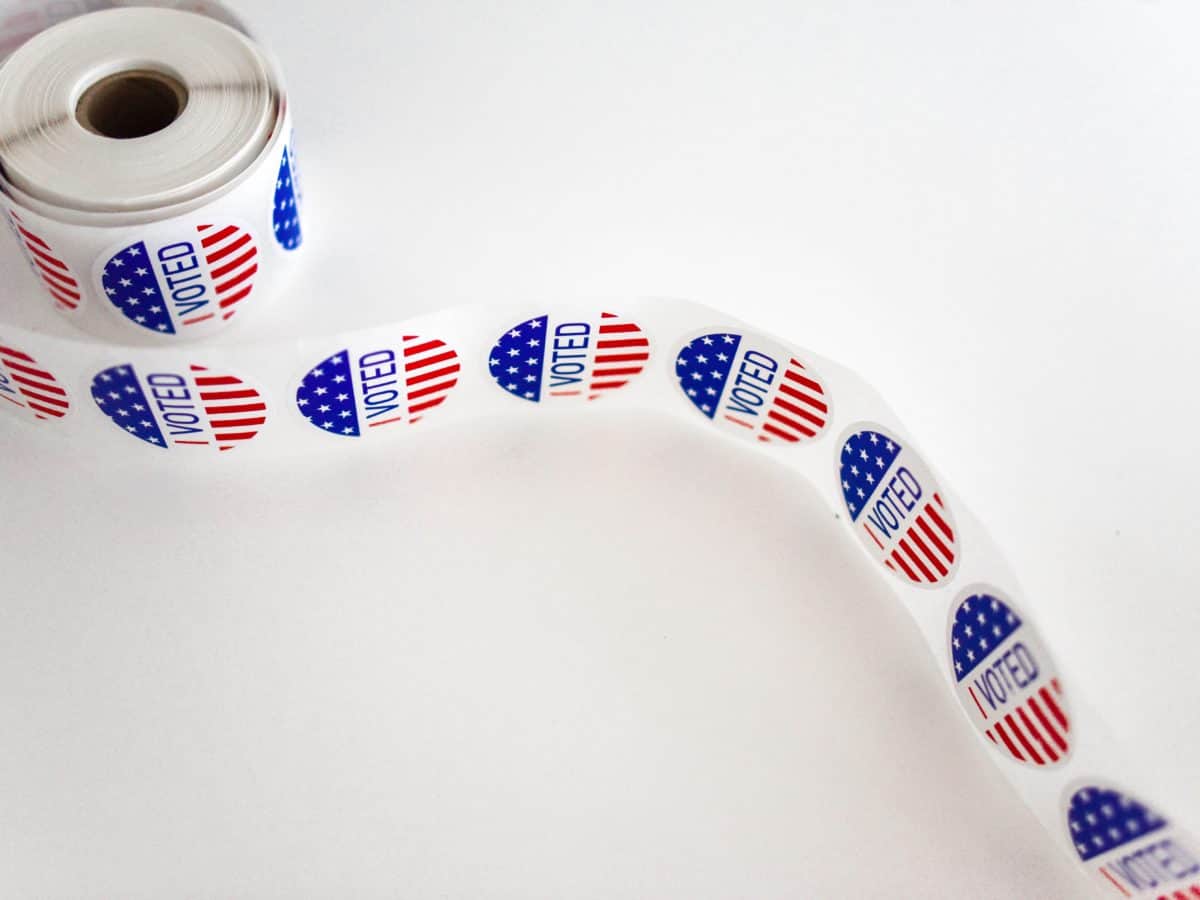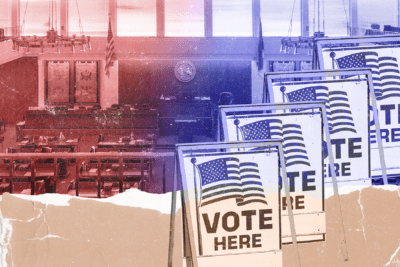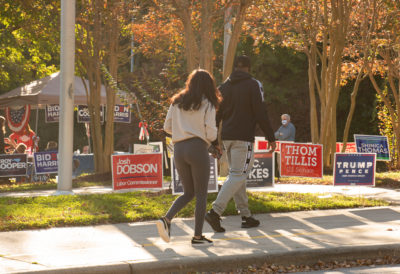
|
|
Contents
- Checking your voter registration status
- Registering to vote or updating your registration
- Qualifications to vote
- Voting in person on Election Day
- Voting early in person
- Voting with an absentee ballot
- Voter identification
- What to do if you don’t currently have a photo ID
- Voting with a provisional ballot
North Carolina voters have big decisions to make this November that will affect their federal, state, and local governments. A great deal is also at stake for education, including the election of a new state superintendent.
Election Day for the 2024 general election is Tuesday, Nov. 5, with early voting to begin in North Carolina on Oct. 17 and continuing through Nov. 2.
Registration is a key step all first-time voters must take before casting their ballots. If you are already registered to vote, be aware you may need to update your voter registration to reflect a new name, address, or party affiliation.
The last day to register to vote in North Carolina for the 2024 general election is Friday, Oct. 11 by 5 p.m., though voters may complete same-day registration during the early voting period.
Keep reading to learn more about voting and registering in the upcoming election. You can navigate through this page’s table of contents to answer your questions about the election.
Note: North Carolina State Board of Elections is the source for most information in this article.
Checking your voter registration status
To ensure you are registered to vote and your information is up to date and accurate, you can use this State Board of Elections search tool. Simply enter your information and view the results to determine if you are registered and if any of your information needs to be updated.
Through this tool, you will also be able to view your Election Day polling place, sample ballots, voting districts, and voter history.
You will also be able to determine if you are listed as an active or inactive voter. Inactive voters are still registered to vote.
If a voter hasn’t voted in two federal election cycles, which is four years, their county board of elections will send the voter an address confirmation mailing, requiring the voter to return the mailing confirming their address within 30 days. If the voter does not return the confirmation, they will be listed as inactive.
If you are listed as inactive but choose to participate in the election, you must simply verify and/or update your address when arriving to vote, though no special document is required.
Registering to vote or updating your registration
First time voters can register in person at a Department of Motor Vehicles (DMV) office or at a number of other state agencies you can find listed here. Existing DMV customers can also register to vote online.
Would-be voters can also register to vote by mail by filling out a form in either English or Spanish.
Currently registered voters can update their information following similar steps, though voters needing to change their name must do so in person or via mail rather than online.
If you miss the Oct. 11 deadline to register to vote, you may also register or update your information during the early voting period.
Qualifications to vote
To vote, individuals must meet the following qualifications:
- Be a U.S. citizen, though citizenship documents are not required for registration.
- Have been a resident in the county of registration for at least 30 days before Election Day.
- Be at least 18 years old by the date of the General Election.
- Not be actively serving a felony sentence, probation, post-release supervision, or parole. Those who have fully completed their felony sentence can vote, but must re-register.
Voting in person on Election Day
Those voting in person on Election Day must vote at their assigned polling location and bring their photo ID with them. To find your polling location, you can search here by looking up your residential address.
The polls are open on Election Day from 6:30 a.m. until 7:30 p.m. If a voter is still waiting in line to cast their ballot by the time polls close, they legally cannot be turned away until they have completed the voting process.
Curbside voting is available to those unable to enter a polling place due to age, disability, or having COVID-19 symptoms.
Those eligible for curbside voting will need to sign an affidavit to state they are unable to enter the polling place to vote.
Voting early in person
Unlike voting on Election Day, those voting during the early voting period can vote at any polling location in their county.
Early voting in North Carolina begins at 8 a.m. on Thursday, Oct. 17 and ends at 3 p.m. Saturday, Nov. 2.
To find early voting polling locations, visit this page.
Voting with an absentee ballot
Absentee ballots allow voters in North Carolina to vote by mail if they cannot vote in person for any reason.
To request an absentee ballot, you may do so online here or by mailing a form to your county board of elections in English or Spanish. The deadline to request an absentee ballot is Oct. 29.
Once requested, you can track the status of your absentee ballot through BallotTrax.
Voters using an absentee ballot will need to attach a photocopy of their photo ID or fill out an ID Exception Form.
Once an absentee ballot is complete, voters may send their ballot to their county boards of election by mail, or deliver it in person to the county board of elections ofice or to an open polling site during early voting. Absentee ballots can’t be delivered to a polling site on Election Day.
Your absentee ballot must be received by your county board of elections by 7:30 p.m. on Election Day.
Voter identification
Voters must present a valid photo ID such as a driver’s license or a United States passport. A list of acceptable IDs can be found here.
Many college or university ID cards and state or public employee ID cards are also acceptable forms of identification for voting. Find out if your student or public employee ID is valid for voting here.
Poll workers will check the ID to ensure the photo presented matches the voter and the name matches or closely resembles the name in the voter registration records, though a matching address is not required.
If a voter has a photo ID or plans to obtain one, but fails to bring it to vote, they may either choose not to vote at that time and return to the polling site later with their ID or vote a provisional ballot and later present their ID to their county board of elections by the day before county canvass. For the general election, this deadline is the second Thursday following Election Day.
All voters will be allowed to cast a ballot regardless of if they present a photo ID or not, though voters without an ID will have to vote with a provisional ballot.
What to do if you don’t currently have a photo ID
If a North Carolina resident does not currently have a photo ID, they may obtain one free of charge by visiting their county’s board of elections office during business hours. To access the location for your county’s board of elections office and to determine its operating hours, click here.
No documents are required to get this free voter ID card from the board of elections, and voters will just have to provide their name, date of birth, and the last four digits of their Social Security number.
Note that while county boards of elections will provide voter photo IDs during early voting, they will not be able to issue IDs between the last day of early voting and Election Day.
North Carolina residents may also access a no-fee state ID at any N.C. Division of Motor Vehicles (DMV) office. Those seeking these IDs must provide the DMV a document verifying their age and identity; a Social Security card or document offering proof of their Social Security number, such as a W-2; and one document proving their residency.
Those unable to travel to the DMV due to a disability may get assistance obtaining a state ID if they can provide a letter from a physician along with documents proving their age, identity, residence, and Social Security number. Those requesting this assistance can contact the DMV online here, or click this page to see a full list of contact options.
The State Board of Elections offers a full list of exceptions for showing a photo ID to vote, including those with religious objections to being photographed or those with a “reasonable impediment” such as lacking a birth certificate.
Voters meeting these exceptions will be asked to fill out an ID Exception Form and vote with a provisional ballot. These ballots will be counted if the ID Exception form is properly and truthfully completed.
Voting with a provisional ballot
Voters may be asked to vote with a provisional ballot if a voter’s qualification or eligibility to vote is called into question, for instance if they vote at the wrong polling place or have no acceptable ID. Voters cannot legally be turned away from a polling place without being given the opportunity to vote provisionally.
Election officials will then review the voter’s eligibility to determine if the vote is valid and can be counted. No election is certified until all provisional ballots are accounted for.
If they need to vote provisionally, a voter will go to the help station at the polling place to obtain their provisional ballot and vote. The voter can then return their provisional ballot to the help station.
Provisional voters will receive a Provisional Identification Number (PIN).
If voting provisionally, you can use your PIN and birth date to check the status of your provisional ballot:
- Online
- Or by calling (919) 814-0700 or (866) 522-4723 (toll-free)







